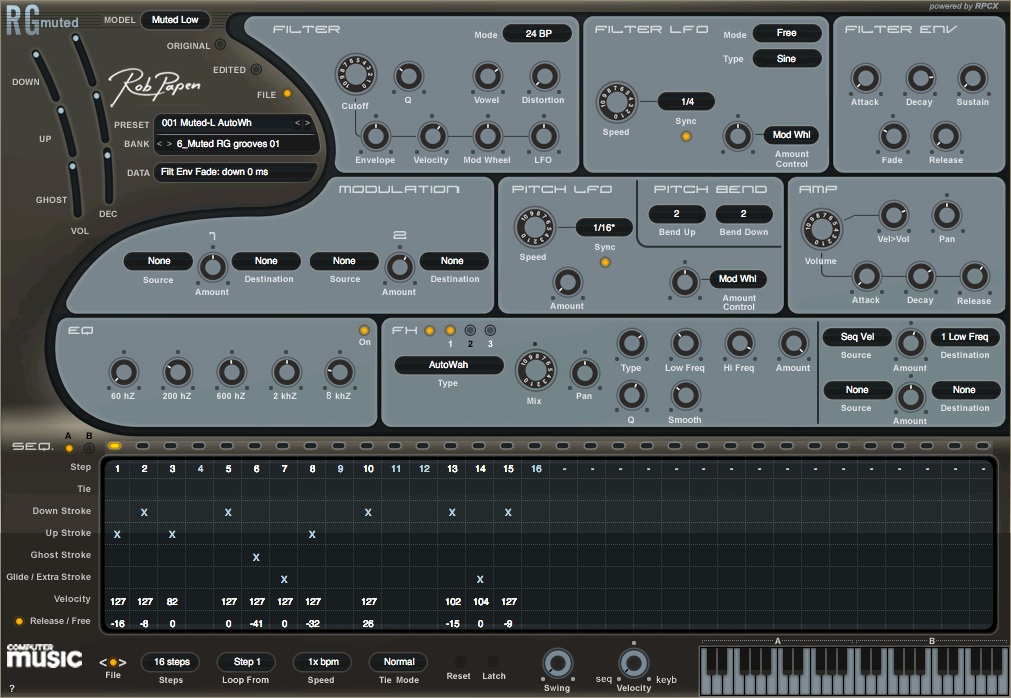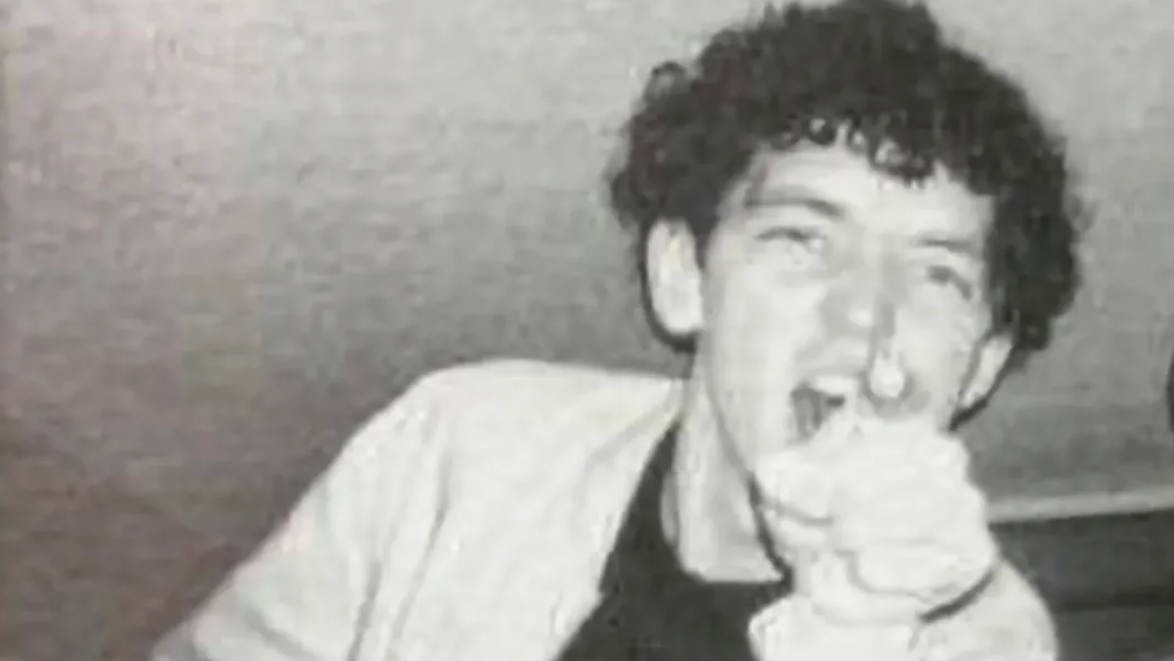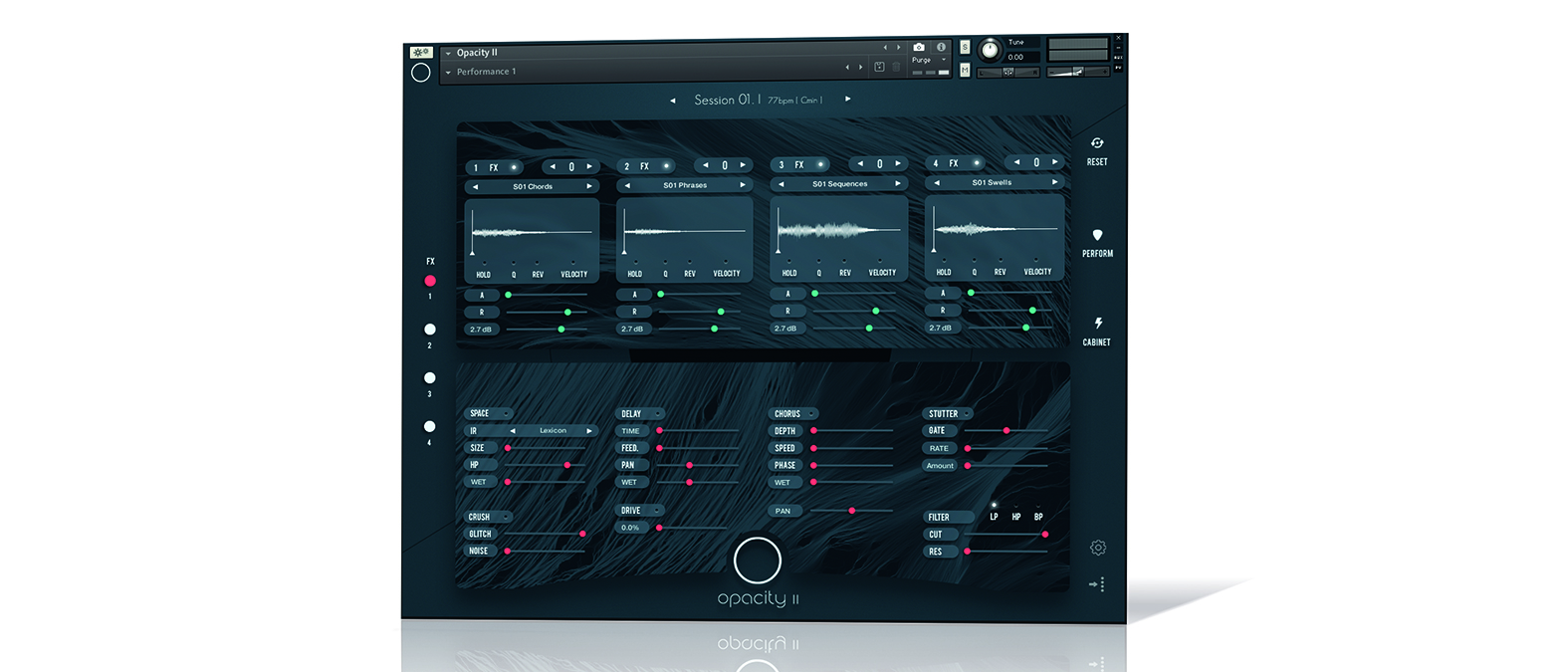MusicRadar Verdict
Building on an already versatile, crystal clear-sounding toolkit, Opacity II perfects the cinematic guitar engine concept.
Pros
- +
Simple and intuitive way to incorporate pro-level guitar texture.
- +
Performance mode allows more individual expression.
- +
Amp sims and effects.
Cons
- -
Some minor slowdown when Session switching.
MusicRadar's got your back
What is it?
Whether it’s moodily swelling, emotively plucking or chordally washing into your ears, cinematic guitar is a mainstay across the modern soundtracking world. Though this playing style is also prevalent in ambient music, it’s really in the generation of score-ready textures for working composers that Audiomodern pitch Opacity II – a highly manipulable guitar sample player, loaded up with some exquisitely well-recorded axe work.
Comprising 14 sessions delicately performed by Washington-based Terre Grande guitarist Justin Hodges, Opacity II’s recording quality is the first thing that hits you after loading up the software within Kontakt. Sumptuous arpeggios, gloomy swells and echo-sodden notes abound as you cycle through the preset Sessions.
Each of the 14 tempo and key-defined Sessions contains four groups of looped performances, comprising elements such as Chords, Phrases, Sequences and Melodic Textures. Each of these groups have 12 different recordings of different approaches to these sound types that all gel together harmonically. This variation can be further increased by dragging across the individual sounds from other Sessions, too.
You’ll note that this is Opacity ‘II’ and follows on from the inaugural version which was only released in 2019, therefore there aren’t major changes to the sound palette in v2, aside from a few additional Sessions and an amazingly effective Reverse mode that can transform the feel of your parts instantly.
Two of the biggest boons with this sequel are the ability to alter your cabinet, selecting between the tonal characteristics of 11 different cab options, modelled after some of the big hitters from the amp world. You can further fine-tune their Size, Air, Balance, Distance and Wetness, as well as a slower or faster rotation, which can bring all kinds of interesting effects to the table.
The other big addition is a brand new, performance mode. Performance mode lets you harness four hugely different individual guitar tones (the ones which make up each group) in playable, modifiable form across your controller keyboard. This can be a cool way to create and save your own individual patches, should you not actually be a guitarist yourself, or find yourself smitten with these pre-designed tones
Performance and verdict
With a range of ways to explore this software, if you load up for example Session 05 and carve out a few chord shapes near the centre of your keyboard, you'll trigger a spectrum of textured patterns, interacting in ways that will make your hairs stand on end.
Though changing between the groups is smooth, mis-fingering results in a tonally offputting chime sound. It’s certainly recommended that you get to grips with the keyboard layout for your Session, and how certain sounds within slot well together, before recording anything. Though the tone of all these sounds is immaculate, further effects can be applied on a per-group basis. You can apply more or less Delay, Chorus, Stutter, Filter and Reverb space to any of the pre-designed patches, or ones you craft ourselves in performance mode.

• Rob Papen Rhythm Guitar
This more groove-based package also comes with an onboard synth to take sounds in edgier directions
• Heavyocity Scoring Guitars 2
If you want to get even more hands on with guitar textures, this suite may be a more appealing prospect
Opacity 2 can have you running into a heavily delayed, palm-muted, plucked sound, rather like a certain beanie-hat-toting Irish riff merchant. You may also find yourself stumbling upon the exact tone of Slowdive’s Sugar for the Pill and other familiarly delay-sodden fare. Beyond soundtracking, Opacity 2 could be put to work in Indie-land, if you needed some subtler harmonic elements particularly.
There’s much to explore here and Opacity’s potential certainly extends beyond its intended target audience. Often when experimenting with Reverse mode, certain phrases take on a completely different, dream-like, quality – when treated with further effect processing, who knows where these possibilities may lead.
Opacity II certainly provides hard benefit to the non-guitarist sound designer, granting customisable control over the numerous facets of a peerless player’s sound, though simply harnessing the preset Sessions and Groups may be enough to fill that space. Guitarists shouldn’t write this off either – Opacity 2 provides a way to re-think your typical approach to writing for the instrument, while making you wish you could wrench the same emotion from our axes.
MusicRadar verdict: Building on an already versatile, crystal clear-sounding toolkit, Opacity II perfects the cinematic guitar engine concept.
The web says
"All that said, if you are looking for some sonic inspiration to help generate your next ambient guitar film score, Opacity II will undoubtedly provide just that."
Sound on Sound
Hands-on demos
Audiomodern
William Morris Music
Sample Library Review
Specifications
- OPACITY runs in Kontakt or Free Kontakt player version 6.2.2 or higher.
- Mac OS X 10.12 or later.
- Windows 7 or later.
- At least 5 GB of RAM (8 GB recommended), and 4 GB of free drive space.
- Stable internet connection for digital delivery and activation is required.
- Native Instruments software requires a minimum of OS X 10.10 or Windows 7.
- Contact: Audiomodern
Computer Music magazine is the world’s best selling publication dedicated solely to making great music with your Mac or PC computer. Each issue it brings its lucky readers the best in cutting-edge tutorials, need-to-know, expert software reviews and even all the tools you actually need to make great music today, courtesy of our legendary CM Plugin Suite.

“Almost a lifetime ago, a few Burnage lads got together and created something special. Something that time can’t out date”: Original Oasis drummer Tony McCarroll pens a wistful message out to his old bandmates

“A high-quality solution for capturing your drums”: Sennheiser MD 421 Kompakt review

“I need to build a sound of my own that has the power that I want”: Floating Points hates festival sound systems so much that he’s invented his own













